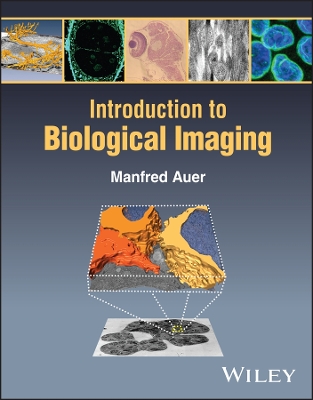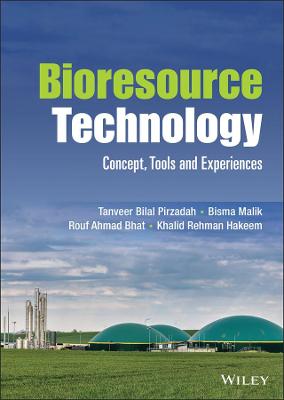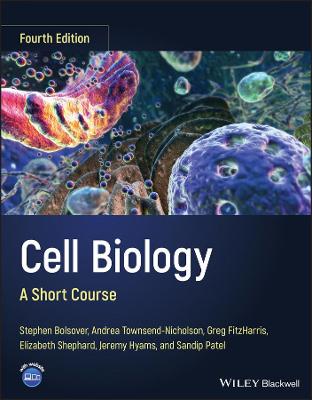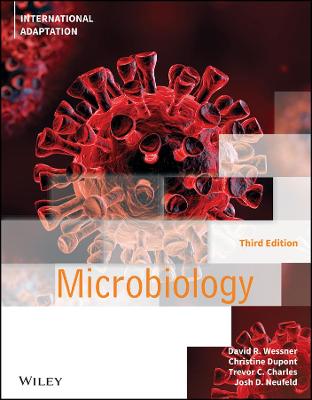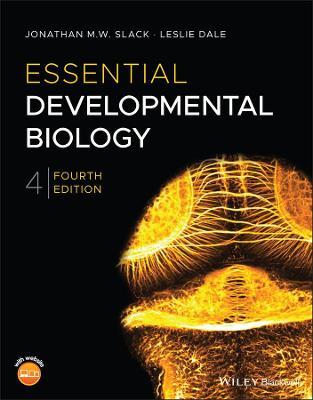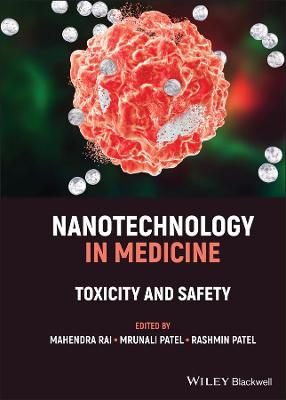Imaging Life
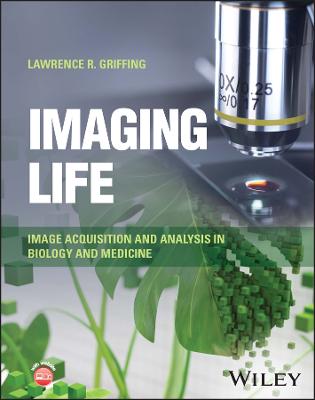 -15%
portes grátis
-15%
portes grátis
Imaging Life
Image Acquisition and Analysis in Biology and Medicine
Griffing, Lawrence R.
John Wiley & Sons Inc
04/2023
544
Dura
Inglês
9781119949206
15 a 20 dias
Acknowledgments xiv
About the Companion Website xv
Section 1 Image Acquisition 1
1 Image Structure and Pixels 3
1.1 The Pixel Is the Smallest Discrete Unit of a Picture 3
1.2 The Resolving Power of a Camera or Display Is the Spatial Frequency of Its Pixels 6
1.3 Image Legibility Is the Ability to Recognize Text in an Image by Eye 7
1.4 Magnification Reduces Spatial Frequencies While Making Bigger Images 9
1.5 Technology Determines Scale and Resolution 11
1.6 The Nyquist Criterion: Capture at Twice the Spatial Frequency of the Smallest Object Imaged 12
1.7 Archival Time, Storage Limits, and the Resolution of the Display Medium Influence Capture and Scan Resolving Power 13
1.8 Digital Image Resizing or Scaling Match the Captured Image Resolution to the Output Resolution 14
1.9 Metadata Describes Image Content, Structure, and Conditions of Acquisition 16
2 Pixel Values and Image Contrast 20
2.1 Contrast Compares the Intensity of a Pixel with That of Its Surround 20
2.2 Pixel Values Determine Brightness and Color 21
2.3 The Histogram Is a Plot of the Number of Pixels in an Image at Each Level of Intensity 24
2.4 Tonal Range Is How Much of the Pixel Depth Is Used in an Image 25
2.5 The Image Histogram Shows Overexposure and Underexposure 26
2.6 High-Key Images Are Very Light, and Low-Key Images Are Very Dark 27
2.7 Color Images Have Various Pixel Depths 27
2.8 Contrast Analysis and Adjustment Using Histograms Are Available in Proprietary and Open-Source Software 29
2.9 The Intensity Transfer Graph Shows Adjustments of Contrast and Brightness Using Input and Output Histograms 30
2.10 Histogram Stretching Can Improve the Contrast and Tonal Range of the Image without Losing Information 32
2.11 Histogram Stretching of Color Channels Improves Color Balance 32
2.12 Software Tools for Contrast Manipulation Provide Linear, Non-linear, and Output-Visualized Adjustment 34
2.13 Different Image Formats Support Different Image Modes 36
2.14 Lossless Compression Preserves Pixel Values, and Lossy Compression Changes Them 37
3 Representation and Evaluation of Image Data 42
3.1 Image Representation Incorporates Multiple Visual Elements to Tell a Story 42
3.2 Illustrated Confections Combine the Accuracy of a Typical Specimen with a Science Story 42
3.3 Digital Confections Combine the Accuracy of Photography with a Science Story 45
3.4 The Video Storyboard Is an Explicit Visual Confection 48
3.5 Artificial Intelligence Can Generate Photorealistic Images from Text Stories 48
3.6 Making Images Believable: Show Representative Images and State the Acquisition Method 50
3.7 Making Images Understood: Clearly Identify Regions of Interest with Suitable Framing, Labels, and Image Contrast 51
3.8 Avoid Dequantification and Technical Artifacts While Not Hesitating to Take the Picture 55
3.9 Accurate, Reproducible Imaging Requires a Set of Rules and Guidelines 56
3.10 The Structural Similarity Index Measure Quantifies Image Degradation 57
4 Image Capture by Eye 61
4.1 The Anatomy of the Eye Limits Its Spatial Resolution 61
4.2 The Dynamic Range of the Eye Exceeds 11 Orders of Magnitude of Light Intensity, and Intrascene Dynamic Range Is about 3 Orders 63
4.3 The Absorption Characteristics of Photopigments of the Eye Determines Its Wavelength Sensitivity 63
4.4 Refraction and Reflection Determine the Optical Properties of Materials 67
4.5 Movement of Light Through the Eye Depends on the Refractive Index and Thickness of the Lens, the Vitreous Humor, and Other Components 69
4.6 Neural Feedback in the Brain Dictates Temporal Resolution of the Eye 69
4.7 We Sense Size and Distribution in Large Spaces Using the Rules of Perspective 70
4.8 Three-Dimensional Representation Depends on Eye Focus from Different Angles 71
4.9 Binocular Vision Relaxes the Eye and Provides a Three-Dimensional View in Stereomicroscopes 74
5 Image Capture with Digital Cameras 78
5.1 Digital Cameras are Everywhere 78
5.2 Light Interacts with Silicon Chips to Produce Electrons 78
5.3 The Anatomy of the Camera Chip Limits Its Spatial Resolution 80
5.4 Camera Chips Convert Spatial Frequencies to Temporal Frequencies with a Series of Horizontal and Vertical Clocks 82
5.5 Different Charge-Coupled Device Architectures Have Different Read-out Mechanisms 85
5.6 The Digital Camera Image Starts Out as an Analog Signal that Becomes Digital 87
5.7 Video Broadcast Uses Legacy Frequency Standards 88
5.8 Codecs Code and Decode Digital Video 89
5.9 Digital Video Playback Formats Vary Widely, Reflecting Different Means of Transmission and Display 91
5.10 The Light Absorption Characteristics of the Metal Oxide Semiconductor, Its Filters, and Its Coatings Determine the Wavelength Sensitivity of the Camera Chip 91
5.11 Camera Noise and Potential Well Size Determine the Sensitivity of the Camera to Detectable Light 93
5.12 Scientific Camera Chips Increase Light Sensitivity and Amplify the Signal 97
5.13 Cameras for Electron Microscopy Use Regular Imaging Chips after Converting Electrons to Photons or Detect the Electron Signal Directly with Modified CMOS 99
5.14 Camera Lenses Place Additional Constraints on Spatial Resolution 101
5.15 Lens Aperture Controls Resolution, the Amount of Light, the Contrast, and the Depth of Field in a Digital Camera 106
5.16 Relative Magnification with a Photographic Lens Depends on Chip Size and Lens Focal Length 107
6 Image Capture by Scanning Systems 111
6.1 Scanners Build Images Point by Point, Line by Line, and Slice by Slice 111
6.2 Consumer-Grade Flatbed Scanners Provide Calibrated Color and Relatively High Resolution Over a Wide Field of View 111
6.3 Scientific-Grade Flatbed Scanners Can Detect Chemiluminescence, Fluorescence, and Phosphorescence 114
6.4 Scientific-Grade Scanning Systems Often Use Photomultiplier Tubes and Avalanche Photodiodes as the Camera 118
6.5 X-ray Planar Radiography Uses Both Scanning and Camera Technologies 119
6.6 Medical Computed Tomography Scans Rotate the X-ray Source and Sensor in a Helical Fashion Around the Body 121
6.7 Micro-CT and Nano-CT Scanners Use Both Hard and Soft X-Rays and Can Resolve Cellular Features 123
6.8 Macro Laser Scanners Acquire Three-Dimensional Images by Time-of-Flight or Structured Light 125
6.9 Laser Scanning and Spinning Disks Generate Images for Confocal Scanning Microscopy 126
6.10 Electron Beam Scanning Generates Images for Scanning Electron Microscopy 128
6.11 Atomic Force Microscopy Scans a Force-Sensing Probe Across the Sample 128
Section 2 Image Analysis 135
7 Measuring Selected Image Features 137
7.1 Digital Image Processing and Measurements are Part of the Image Metadata 137
7.2 The Subject Matter Determines the Choice of Image Analysis and Measurement Software 140
7.3 Recorded Paths, Regions of Interest, or Masks Save Selections for Measurement in Separate Images, Channels, and Overlays 140
7.4 Stereology and Photoquadrat Sampling Measure Unsegmented Images 144
7.5 Automatic Segmentation of Images Selects Image Features for Measurement Based on Common Feature Properties 146
7.6 Segmenting by Pixel Intensity Is Thresholding 146
7.7 Color Segmentation Looks for Similarities in a Three-Dimensional Color Space 147
7.8 Morphological Image Processing Separates or Connects Features 149
7.9 Measures of Pixel Intensity Quantify Light Absorption by and Emission from the Sample 153
7.10 Morphometric Measurements Quantify the Geometric Properties of Selections 155
7.11 Multi-dimensional Measurements Require Specific Filters 156
8 Optics and Image Formation 161
8.1 Optical Mechanics Can Be Well Described Mathematically 161
8.2 A Lens Divides Space Into Image and Object Spaces 161
8.3 The Lens Aperture Determines How Well the Lens Collects Radiation 163
8.4 The Diffraction Limit and the Contrast between Two Closely Spaced Self-Luminous Spots Give Rise to the Limits of Resolution 164
8.5 The Depth of the Three-Dimensional Slice of Object Space Remaining in Focus Is the Depth of Field 167
8.6 In Electromagnetic Lenses, Focal Length Produces Focus and Magnification 170
8.7 The Axial, Z-Dimensional, Point Spread Function Is a Measure of the Axial Resolution of High Numerical Aperture Lenses 171
8.8 Numerical Aperture and Magnification Determine the Light-Gathering Properties of the Microscope Objective 172
8.9 The Modulation (Contrast) Transfer Function Relates the Relative Contrast to Resolving Power in Fourier, or Frequency, Space 172
8.10 The Point Spread Function Convolves the Object to Generate the Image 176
8.11 Problems with the Focus of the Lens Arise from Lens Aberrations 177
8.12 Refractive Index Mismatch in the Sample Produces Spherical Aberration 182
8.13 Adaptive Optics Compensate for Refractive Index Changes and Aberration Introduced by Thick Samples 183
9 Contrast and Tone Control 189
9.1 The Subject Determines the Lighting 189
9.2 Light Measurements Use Two Different Standards: Photometric and Radiometric Units 190
9.3 The Light Emission and Contrast of Small Objects Limits Their Visibility 194
9.4 Use the Image Histogram to Adjust the Trade-off Between Depth of Field and Motion Blur 194
9.5 Use the Camera's Light Meter to Detect Intrascene Dynamic Range and Set Exposure Compensation 196
9.6 Light Sources Produce a Variety of Colors and Intensities That Determine the Quality of the Illumination 197
9.7 Lasers and LEDs Provide Lighting with Specific Color and High Intensity 199
9.8 Change Light Values with Absorption, Reflectance, Interference, and Polarizing Filters 200
9.9 Koehler-Illuminated Microscopes Produce Conjugate Planes of Collimated Light from the Source and Specimen 203
9.10 Reflectors, Diffusers, and Filters Control Lighting in Macro-imaging 207
10 Processing with Digital Filters 212
10.1 Image Processing Occurs Before, During, and After Image Acquisition 212
10.2 Near-Neighbor Operations Modify the Value of a Target Pixel 214
10.3 Rank Filters Identify Noise and Remove It from Images 215
10.4 Convolution Can Be an Arithmetic Operation with Near Neighbors 217
10.5 Deblurring and Background Subtraction Remove Out-of-Focus Features from Optical Sections 221
10.6 Convolution Operations in Frequency Space Multiply the Fourier Transform of an Image by the Fourier Transform of the Convolution Mask 222
10.7 Tomographic Operations in Frequency Space Produce Better Back-Projections 224
10.8 Deconvolution in Frequency Space Removes Blur Introduced by the Optical System But Has a Problem with Noise 224
11 Spatial Analysis 231
11.1 Affine Transforms Produce Geometric Transformations 231
11.2 Measuring Geometric Distortion Requires Grid Calibration 231
11.3 Distortion Compensation Locally Adds and Subtracts Pixels 231
11.4 Shape Analysis Starts with the Identification of Landmarks, Then Registration 232
11.5 Grid Transformations are the Basis for Morphometric Examination of Shape Change in Populations 234
11.6 Principal Component Analysis and Canonical Variates Analysis Use Measures of Similarity as Coordinates 237
11.7 Convolutional Neural Networks Can Identify Shapes and Objects Using Deep Learning 238
11.8 Boundary Morphometrics Analyzes and Mathematically Describes the Edge of the Object 240
11.9 Measurement of Object Boundaries Can Reveal Fractal Relationships 245
11.10 Pixel Intensity-Based Colocalization Analysis Reports the Spatial Correlation of Overlapping Signals 246
11.11 Distance-Based Colocalization and Cluster Analysis Analyze the Spatial Proximity of Objects 250
11.12 Fluorescence Resonance Energy Transfer Occurs Over Small (1-10 nm) Distances 252
11.13 Image Correlations Reveal Patterns in Time and Space 253
12 Temporal Analysis 260
12.1 Representations of Molecular, Cellular, Tissue, and Organism Dynamics Require Video and Motion Graphics 260
12.2 Motion Graphics Editors Use Key Frames to Specify Motion 262
12.3 Motion Estimation Uses Successive Video Frames to Analyze Motion 265
12.4 Optic Flow Compares the Intensities of Pixels, Pixel Blocks, or Regions Between Frames 266
12.5 The Kymograph Uses Time as an Axis to Make a Visual Plot of the Object Motion 268
12.6 Particle Tracking Is a Form of Feature-Based Motion Estimation 269
12.7 Fluorescence Recovery After Photobleaching Shows Compartment Connectivity and the Movement of Molecules 273
12.8 Fluorescence Switching Also Shows Connectivity and Movement 276
12.9 Fluorescence Correlation Spectroscopy and Raster Image Correlation Spectroscopy Can Distinguish between Diffusion and Advection 280
12.10 Fluorescent Protein Timers Provide Tracking of Maturing Proteins as They Move through Compartments 282
13 Three-Dimensional Imaging, Modeling, and Analysis 287
13.1 Three-Dimensional Worlds Are Scalable and Require Both Camera and Actor Views 287
13.2 Stacking Multiple Adjacent Slices Can Produce a Three-Dimensional Volume or Surface 291
13.3 Structure-from-Motion Photogrammetry Reconstructs Three-Dimensional Surfaces Using Multiple Camera Views 292
13.4 Reconstruction of Aligned Images in Fourier Space Produces Three-Dimensional Volumes or Surfaces 295
13.5 Surface Rendering Produces Isosurface Polygon Meshes Generated from Contoured Intensities 296
13.6 Texture Maps of Object Isosurfaces Are Images or Movies 299
13.7 Ray Tracing Follows a Ray of Light Backward from the Eye or Camera to Its Source 300
13.8 Ray Tracing Shows the Object Based on Internal Intensities or Nearness to the Camera 300
13.9 Transfer Functions Discriminate Objects in Ray-Traced Three Dimensions 301
13.10 Four Dimensions, a Time Series of Three-Dimensional Volumes, Can Use Either Ray-Traced or Isosurface Rendering 303
13.11 Volumes Rendered with Splats and Texture Maps Provide Realistic Object-Ordered Reconstructions 303
13.12 Analysis of Three-Dimensional Volumes Uses the Same Approaches as Two-Dimensional Area Analysis But Includes Voxel Adjacency and Connectivity 305
13.13 Head-Mounted Displays and Holograms Achieve an Immersive Three-Dimensional Experience 307
Section 3 Image Modalities 313
14 Ultrasound Imaging 315
14.1 Ultrasonography Is a Cheap, High-Resolution, Deep-Penetration, Non-invasive Imaging Modality 315
14.2 Many Species Use Ultrasound and Infrasound for Communication and Detection 315
14.3 Sound Is a Compression, or Pressure, Wave 316
14.4 The Measurement of Audible Sound Intensity Is in Decibels 317
14.5 A Piezoelectric Transducer Creates the Ultrasound Wave 318
14.6 Different Tissues Have Different Acoustic Impedances 319
14.7 Sonic Wave Scatter Generates Speckle 321
14.8 Lateral Resolution Depends on Sound Frequency and the Size and Focal Length of the Transducer Elements 322
14.9 Axial Resolution Depends on the Duration of the Ultrasound Pulse 323
14.10 Scatter and Absorption by Tissues Attenuate the Ultrasound Beam 324
14.11 Amplitude Mode, Motion Mode, Brightness Mode, and Coherent Planar Wave Mode Are the Standard Modes for Clinical Practice 324
14.12 Doppler Scans of Moving Red Blood Cells Reveal Changes in Vascular Flows with Time and Provide the Basis for Functional Ultrasound Imaging 327
14.13 Microbubbles and Gas Vesicles Provide Ultrasound Contrast and Have Therapeutic Potential 329
15 Magnetic Resonance Imaging 334
15.1 Magnetic Resonance Imaging, Like Ultrasound, Performs Non-invasive Analysis without Ionizing Radiation 334
15.2 Magnetic Resonance Imaging Is an Image of the Hydrogen Nuclei in Fat and Water 337
15.3 Magnetic Resonance Imaging Sets up a Net Magnetization in Each Voxel That Is in Dynamic Equilibrium with the Applied Field 338
15.4 The Magnetic Field Imposed by Magnetic Resonance Imaging Makes Protons Spin Like Tops with the Same Tilt and Determines the Frequency of Precession 338
15.5 Magnetic Resonance Imaging Disturbs the Net Magnetization Equilibrium and Then Follows the Relaxation Back to Equilibrium 339
15.6 T2 Relaxation, or Spin-Spin Relaxation, Causes the Disappearance of Transverse (x-y Direction) Magnetization Through Dephasing 342
15.7 T1 Relaxation, or Spin-Lattice Relaxation, Causes the Disappearance of Longitudinal (z-Direction) Magnetization Through Energy Loss 342
15.8 Faraday Induction Produces the Magnetic Resonance Imaging Signal (in Volts) with Coils in the x-y Plane 343
15.9 Magnetic Gradients and Selective Radiofrequency Frequencies Generate Slices in the x, y, and z Directions 343
15.10 Acquiring a Gradient Echo Image Is a Highly Repetitive Process, Getting Information Independently in the x, y, and z Dimensions 344
15.11 Fast Low-Angle Shot Gradient Echo Imaging Speeds Up Imaging for T1-Weighted Images 346
15.12 The Spin-Echo Image Compensates for Magnetic Heterogeneities in the Tissue in T2-Weighted Images 346
15.13 Three-Dimensional Imaging Sequences Produce Higher Axial Resolution 347
15.14 Echo Planar Imaging Is a Fast Two-Dimensional Imaging Modality But Has Limited Resolving Power 347
15.15 Magnetic Resonance Angiography Analyzes Blood Velocity 347
15.16 Diffusion Tensor Imaging Visualizes and Compares Directional (Anisotropic) Diffusion Coefficients in a Tissue 349
15.17 Functional Magnetic Resonance Imaging Provides a Map of Brain Activity 350
15.18 Magnetic Resonance Imaging Contrast Agents Detect Small Lesions That Are Otherwise Difficult to Detect 351
16 Microscopy with Transmitted and Refracted Light 355
16.1 Brightfield Microscopy of Living Cells Uses Apertures and the Absorbance of Transmitted Light to Generate Contrast 355
16.2 Staining Fixed or Frozen Tissue Can Localize Large Polymers, Such as Proteins, Carbohydrates, and Nucleic Acids, But Is Less Effective for Lipids, Diffusible Ions, and Small Metabolites 361
16.3 Darkfield Microscopy Generates Contrast by Only Collecting the Refracted Light from the Specimen 365
16.4 Rheinberg Microscopy Generates Contrast by Producing Color Differences between Refracted and Unrefracted Light 368
16.5 Wave Interference from the Object and Its Surround Generates Contrast in Polarized Light, Differential Interference Contrast, and Phase Contrast Microscopies 369
16.6 Phase Contrast Microscopy Generates Contrast by Changing the Phase Difference Between the Light Coming from the Object and Its Surround 369
16.7 Polarized Light Reveals Order within a Specimen and Differences in Object Thickness 374
16.8 The Phase Difference Between the Slow and Fast Axes of Ordered Specimens Generates Contrast in Polarized Light Microscopy 376
16.9 Compensators Cancel Out or Add to the Retardation Introduced by the Sample, Making It Possible to Measure the Sample Retardation 379
16.10 Differential Interference Contrast Microscopy Is a Form of Polarized Light Microscopy That Generates Contrast Through Differential Interference of Two Slightly Separated Beams of Light 383
17 Microscopy Using Fluoresced and Reflected Light 390
17.1 Fluorescence and Autofluorescence: Excitation of Molecules by Light Leads to Rapid Re-emission of Lower Energy Light 390
17.2 Fluorescence Properties Vary Among Molecules and Depend on Their Environment 391
17.3 Fluorescent Labels Include Fluorescent Proteins, Fluorescent Labeling Agents, and Vital and Non-vital Fluorescence Affinity Dyes 394
17.4 Fluorescence Environment Sensors Include Single-Wavelength Ion Sensors, Ratio Imaging Ion Sensors, FRET Sensors, and FRET-FLIM Sensors 399
17.5 Widefield Microscopy for Reflective or Fluorescent Samples Uses Epi-illumination 402
17.6 Epi-polarization Microscopy Detects Reflective Ordered Inorganic or Organic Crystallites and Uses Nanogold and Gold Beads as Labels 405
17.7 To Optimize the Signal from the Sample, Use Specialized and Adaptive Optics 405
17.8 Confocal Microscopes Use Accurate, Mechanical Four-Dimensional Epi-illumination and Acquisition 408
17.9 The Best Light Sources for Fluorescence Match Fluorophore Absorbance 410
17.10 Filters, Mirrors, and Computational Approaches Optimize Signal While Limiting the Crosstalk Between Fluorophores 411
17.11 The Confocal Microscope Has Higher Axial and Lateral Resolving Power Than the Widefield Epi-illuminated Microscope, Some Designs Reaching Superresolution 415
17.12 Multiphoton Microscopy and Other Forms of Non-linear Optics Create Conditions for Near-Simultaneous Excitation of Fluorophores with Two or More Photons 419
18 Extending the Resolving Power of the Light Microscope in Time and Space 427
18.1 Superresolution Microscopy Extends the Resolving Power of the Light Microscope 427
18.2 Fluorescence Lifetime Imaging Uses a Temporal Resolving Power that Extends to Gigahertz Frequencies (Nanosecond Resolution) 428
18.3 Spatial Resolving Power Extends Past the Diffraction Limit of Light 429
18.4 Light Sheet Fluorescence Microscopy Achieves Fast Acquisition Times and Low Photon Dose 432
18.5 Lattice Light Sheets Increase Axial Resolving Power 435
18.6 Total Internal Reflection Microscopy and Glancing Incident Microscopy Produce a Thin Sheet of Excitation Energy Near the Coverslip 437
18.7 Structured Illumination Microscopy Improves Resolution with Harmonic Patterns That Reveal Higher Spatial Frequencies 440
18.8 Stimulated Emission Depletion and Reversible Saturable Optical Linear Fluorescence Transitions Superresolution Approaches Use Reversibly Saturable Fluorescence to Reduce the Size of the Illumination Spot 447
18.9 Single-Molecule Excitation Microscopies, Photo-Activated Localization Microscopy, and Stochastic Optical Reconstruction Microscopy Also Rely on Switchable Fluorophores 452
18.10 MINFLUX Combines Single-Molecule Localization with Structured Illumination to Get Resolution below 10 nm 455
19 Electron Microscopy 461
19.1 Electron Microscopy Uses a Transmitted Primary Electron Beam (Transmission Electron Micrography) or Secondary and Backscattered Electrons (Scanning Electron Micrography) to Image the Sample 461
19.2 Some Forms of Scanning Electron Micrography Use Unfixed Tissue at Low Vacuums (Relatively High Pressure) 462
19.3 Both Transmission Electron Micrography and Scanning Electron Micrography Use Frozen or Fixed Tissues 465
19.4 Critical Point Drying and Surface Coating with Metal Preserves Surface Structures and Enhances Contrast for Scanning Electron Micrography 467
19.5 Glass and Diamond Knives Make Ultrathin Sections on Ultramicrotomes 468
19.6 The Filament Type and the Condenser Lenses Control Illumination in Scanning Electron Micrography and Transmission Electron Micrography 471
19.7 The Objective Lens Aperture Blocks Scattered Electrons, Producing Contrast in Transmission Electron Micrography 474
19.8 High-Resolution Transmission Electron Micrography Uses Large (or No) Objective Apertures 475
19.9 Conventional Transmission Electron Micrography Provides a Cellular Context for Visualizing Organelles and Specific Molecules 479
19.10 Serial Section Transmitted Primary Electron Analysis Can Provide Three-Dimensional Cellular Structures 482
19.11 Scanning Electron Micrography Volume Microscopy Produces Three-Dimensional Microscopy at Nanometer Scales and Includes In-Lens Detectors and In-Column Sectioning Devices 483
19.12 Correlative Electron Microscopy Provides Ultrastructural Context for Fluorescence Studies 488
19.13 Tomographic Reconstruction of Transmission Electron Micrography Images Produces Very Thin (10-nm) Virtual Sections for High-Resolution Three-Dimensional Reconstruction 490
19.14 Cryo-Electron Microscopy Achieves Molecular Resolving Power (Resolution, 0.1-0.2 Nm) Using Single-Particle Analysis 492
Index 497
Acknowledgments xiv
About the Companion Website xv
Section 1 Image Acquisition 1
1 Image Structure and Pixels 3
1.1 The Pixel Is the Smallest Discrete Unit of a Picture 3
1.2 The Resolving Power of a Camera or Display Is the Spatial Frequency of Its Pixels 6
1.3 Image Legibility Is the Ability to Recognize Text in an Image by Eye 7
1.4 Magnification Reduces Spatial Frequencies While Making Bigger Images 9
1.5 Technology Determines Scale and Resolution 11
1.6 The Nyquist Criterion: Capture at Twice the Spatial Frequency of the Smallest Object Imaged 12
1.7 Archival Time, Storage Limits, and the Resolution of the Display Medium Influence Capture and Scan Resolving Power 13
1.8 Digital Image Resizing or Scaling Match the Captured Image Resolution to the Output Resolution 14
1.9 Metadata Describes Image Content, Structure, and Conditions of Acquisition 16
2 Pixel Values and Image Contrast 20
2.1 Contrast Compares the Intensity of a Pixel with That of Its Surround 20
2.2 Pixel Values Determine Brightness and Color 21
2.3 The Histogram Is a Plot of the Number of Pixels in an Image at Each Level of Intensity 24
2.4 Tonal Range Is How Much of the Pixel Depth Is Used in an Image 25
2.5 The Image Histogram Shows Overexposure and Underexposure 26
2.6 High-Key Images Are Very Light, and Low-Key Images Are Very Dark 27
2.7 Color Images Have Various Pixel Depths 27
2.8 Contrast Analysis and Adjustment Using Histograms Are Available in Proprietary and Open-Source Software 29
2.9 The Intensity Transfer Graph Shows Adjustments of Contrast and Brightness Using Input and Output Histograms 30
2.10 Histogram Stretching Can Improve the Contrast and Tonal Range of the Image without Losing Information 32
2.11 Histogram Stretching of Color Channels Improves Color Balance 32
2.12 Software Tools for Contrast Manipulation Provide Linear, Non-linear, and Output-Visualized Adjustment 34
2.13 Different Image Formats Support Different Image Modes 36
2.14 Lossless Compression Preserves Pixel Values, and Lossy Compression Changes Them 37
3 Representation and Evaluation of Image Data 42
3.1 Image Representation Incorporates Multiple Visual Elements to Tell a Story 42
3.2 Illustrated Confections Combine the Accuracy of a Typical Specimen with a Science Story 42
3.3 Digital Confections Combine the Accuracy of Photography with a Science Story 45
3.4 The Video Storyboard Is an Explicit Visual Confection 48
3.5 Artificial Intelligence Can Generate Photorealistic Images from Text Stories 48
3.6 Making Images Believable: Show Representative Images and State the Acquisition Method 50
3.7 Making Images Understood: Clearly Identify Regions of Interest with Suitable Framing, Labels, and Image Contrast 51
3.8 Avoid Dequantification and Technical Artifacts While Not Hesitating to Take the Picture 55
3.9 Accurate, Reproducible Imaging Requires a Set of Rules and Guidelines 56
3.10 The Structural Similarity Index Measure Quantifies Image Degradation 57
4 Image Capture by Eye 61
4.1 The Anatomy of the Eye Limits Its Spatial Resolution 61
4.2 The Dynamic Range of the Eye Exceeds 11 Orders of Magnitude of Light Intensity, and Intrascene Dynamic Range Is about 3 Orders 63
4.3 The Absorption Characteristics of Photopigments of the Eye Determines Its Wavelength Sensitivity 63
4.4 Refraction and Reflection Determine the Optical Properties of Materials 67
4.5 Movement of Light Through the Eye Depends on the Refractive Index and Thickness of the Lens, the Vitreous Humor, and Other Components 69
4.6 Neural Feedback in the Brain Dictates Temporal Resolution of the Eye 69
4.7 We Sense Size and Distribution in Large Spaces Using the Rules of Perspective 70
4.8 Three-Dimensional Representation Depends on Eye Focus from Different Angles 71
4.9 Binocular Vision Relaxes the Eye and Provides a Three-Dimensional View in Stereomicroscopes 74
5 Image Capture with Digital Cameras 78
5.1 Digital Cameras are Everywhere 78
5.2 Light Interacts with Silicon Chips to Produce Electrons 78
5.3 The Anatomy of the Camera Chip Limits Its Spatial Resolution 80
5.4 Camera Chips Convert Spatial Frequencies to Temporal Frequencies with a Series of Horizontal and Vertical Clocks 82
5.5 Different Charge-Coupled Device Architectures Have Different Read-out Mechanisms 85
5.6 The Digital Camera Image Starts Out as an Analog Signal that Becomes Digital 87
5.7 Video Broadcast Uses Legacy Frequency Standards 88
5.8 Codecs Code and Decode Digital Video 89
5.9 Digital Video Playback Formats Vary Widely, Reflecting Different Means of Transmission and Display 91
5.10 The Light Absorption Characteristics of the Metal Oxide Semiconductor, Its Filters, and Its Coatings Determine the Wavelength Sensitivity of the Camera Chip 91
5.11 Camera Noise and Potential Well Size Determine the Sensitivity of the Camera to Detectable Light 93
5.12 Scientific Camera Chips Increase Light Sensitivity and Amplify the Signal 97
5.13 Cameras for Electron Microscopy Use Regular Imaging Chips after Converting Electrons to Photons or Detect the Electron Signal Directly with Modified CMOS 99
5.14 Camera Lenses Place Additional Constraints on Spatial Resolution 101
5.15 Lens Aperture Controls Resolution, the Amount of Light, the Contrast, and the Depth of Field in a Digital Camera 106
5.16 Relative Magnification with a Photographic Lens Depends on Chip Size and Lens Focal Length 107
6 Image Capture by Scanning Systems 111
6.1 Scanners Build Images Point by Point, Line by Line, and Slice by Slice 111
6.2 Consumer-Grade Flatbed Scanners Provide Calibrated Color and Relatively High Resolution Over a Wide Field of View 111
6.3 Scientific-Grade Flatbed Scanners Can Detect Chemiluminescence, Fluorescence, and Phosphorescence 114
6.4 Scientific-Grade Scanning Systems Often Use Photomultiplier Tubes and Avalanche Photodiodes as the Camera 118
6.5 X-ray Planar Radiography Uses Both Scanning and Camera Technologies 119
6.6 Medical Computed Tomography Scans Rotate the X-ray Source and Sensor in a Helical Fashion Around the Body 121
6.7 Micro-CT and Nano-CT Scanners Use Both Hard and Soft X-Rays and Can Resolve Cellular Features 123
6.8 Macro Laser Scanners Acquire Three-Dimensional Images by Time-of-Flight or Structured Light 125
6.9 Laser Scanning and Spinning Disks Generate Images for Confocal Scanning Microscopy 126
6.10 Electron Beam Scanning Generates Images for Scanning Electron Microscopy 128
6.11 Atomic Force Microscopy Scans a Force-Sensing Probe Across the Sample 128
Section 2 Image Analysis 135
7 Measuring Selected Image Features 137
7.1 Digital Image Processing and Measurements are Part of the Image Metadata 137
7.2 The Subject Matter Determines the Choice of Image Analysis and Measurement Software 140
7.3 Recorded Paths, Regions of Interest, or Masks Save Selections for Measurement in Separate Images, Channels, and Overlays 140
7.4 Stereology and Photoquadrat Sampling Measure Unsegmented Images 144
7.5 Automatic Segmentation of Images Selects Image Features for Measurement Based on Common Feature Properties 146
7.6 Segmenting by Pixel Intensity Is Thresholding 146
7.7 Color Segmentation Looks for Similarities in a Three-Dimensional Color Space 147
7.8 Morphological Image Processing Separates or Connects Features 149
7.9 Measures of Pixel Intensity Quantify Light Absorption by and Emission from the Sample 153
7.10 Morphometric Measurements Quantify the Geometric Properties of Selections 155
7.11 Multi-dimensional Measurements Require Specific Filters 156
8 Optics and Image Formation 161
8.1 Optical Mechanics Can Be Well Described Mathematically 161
8.2 A Lens Divides Space Into Image and Object Spaces 161
8.3 The Lens Aperture Determines How Well the Lens Collects Radiation 163
8.4 The Diffraction Limit and the Contrast between Two Closely Spaced Self-Luminous Spots Give Rise to the Limits of Resolution 164
8.5 The Depth of the Three-Dimensional Slice of Object Space Remaining in Focus Is the Depth of Field 167
8.6 In Electromagnetic Lenses, Focal Length Produces Focus and Magnification 170
8.7 The Axial, Z-Dimensional, Point Spread Function Is a Measure of the Axial Resolution of High Numerical Aperture Lenses 171
8.8 Numerical Aperture and Magnification Determine the Light-Gathering Properties of the Microscope Objective 172
8.9 The Modulation (Contrast) Transfer Function Relates the Relative Contrast to Resolving Power in Fourier, or Frequency, Space 172
8.10 The Point Spread Function Convolves the Object to Generate the Image 176
8.11 Problems with the Focus of the Lens Arise from Lens Aberrations 177
8.12 Refractive Index Mismatch in the Sample Produces Spherical Aberration 182
8.13 Adaptive Optics Compensate for Refractive Index Changes and Aberration Introduced by Thick Samples 183
9 Contrast and Tone Control 189
9.1 The Subject Determines the Lighting 189
9.2 Light Measurements Use Two Different Standards: Photometric and Radiometric Units 190
9.3 The Light Emission and Contrast of Small Objects Limits Their Visibility 194
9.4 Use the Image Histogram to Adjust the Trade-off Between Depth of Field and Motion Blur 194
9.5 Use the Camera's Light Meter to Detect Intrascene Dynamic Range and Set Exposure Compensation 196
9.6 Light Sources Produce a Variety of Colors and Intensities That Determine the Quality of the Illumination 197
9.7 Lasers and LEDs Provide Lighting with Specific Color and High Intensity 199
9.8 Change Light Values with Absorption, Reflectance, Interference, and Polarizing Filters 200
9.9 Koehler-Illuminated Microscopes Produce Conjugate Planes of Collimated Light from the Source and Specimen 203
9.10 Reflectors, Diffusers, and Filters Control Lighting in Macro-imaging 207
10 Processing with Digital Filters 212
10.1 Image Processing Occurs Before, During, and After Image Acquisition 212
10.2 Near-Neighbor Operations Modify the Value of a Target Pixel 214
10.3 Rank Filters Identify Noise and Remove It from Images 215
10.4 Convolution Can Be an Arithmetic Operation with Near Neighbors 217
10.5 Deblurring and Background Subtraction Remove Out-of-Focus Features from Optical Sections 221
10.6 Convolution Operations in Frequency Space Multiply the Fourier Transform of an Image by the Fourier Transform of the Convolution Mask 222
10.7 Tomographic Operations in Frequency Space Produce Better Back-Projections 224
10.8 Deconvolution in Frequency Space Removes Blur Introduced by the Optical System But Has a Problem with Noise 224
11 Spatial Analysis 231
11.1 Affine Transforms Produce Geometric Transformations 231
11.2 Measuring Geometric Distortion Requires Grid Calibration 231
11.3 Distortion Compensation Locally Adds and Subtracts Pixels 231
11.4 Shape Analysis Starts with the Identification of Landmarks, Then Registration 232
11.5 Grid Transformations are the Basis for Morphometric Examination of Shape Change in Populations 234
11.6 Principal Component Analysis and Canonical Variates Analysis Use Measures of Similarity as Coordinates 237
11.7 Convolutional Neural Networks Can Identify Shapes and Objects Using Deep Learning 238
11.8 Boundary Morphometrics Analyzes and Mathematically Describes the Edge of the Object 240
11.9 Measurement of Object Boundaries Can Reveal Fractal Relationships 245
11.10 Pixel Intensity-Based Colocalization Analysis Reports the Spatial Correlation of Overlapping Signals 246
11.11 Distance-Based Colocalization and Cluster Analysis Analyze the Spatial Proximity of Objects 250
11.12 Fluorescence Resonance Energy Transfer Occurs Over Small (1-10 nm) Distances 252
11.13 Image Correlations Reveal Patterns in Time and Space 253
12 Temporal Analysis 260
12.1 Representations of Molecular, Cellular, Tissue, and Organism Dynamics Require Video and Motion Graphics 260
12.2 Motion Graphics Editors Use Key Frames to Specify Motion 262
12.3 Motion Estimation Uses Successive Video Frames to Analyze Motion 265
12.4 Optic Flow Compares the Intensities of Pixels, Pixel Blocks, or Regions Between Frames 266
12.5 The Kymograph Uses Time as an Axis to Make a Visual Plot of the Object Motion 268
12.6 Particle Tracking Is a Form of Feature-Based Motion Estimation 269
12.7 Fluorescence Recovery After Photobleaching Shows Compartment Connectivity and the Movement of Molecules 273
12.8 Fluorescence Switching Also Shows Connectivity and Movement 276
12.9 Fluorescence Correlation Spectroscopy and Raster Image Correlation Spectroscopy Can Distinguish between Diffusion and Advection 280
12.10 Fluorescent Protein Timers Provide Tracking of Maturing Proteins as They Move through Compartments 282
13 Three-Dimensional Imaging, Modeling, and Analysis 287
13.1 Three-Dimensional Worlds Are Scalable and Require Both Camera and Actor Views 287
13.2 Stacking Multiple Adjacent Slices Can Produce a Three-Dimensional Volume or Surface 291
13.3 Structure-from-Motion Photogrammetry Reconstructs Three-Dimensional Surfaces Using Multiple Camera Views 292
13.4 Reconstruction of Aligned Images in Fourier Space Produces Three-Dimensional Volumes or Surfaces 295
13.5 Surface Rendering Produces Isosurface Polygon Meshes Generated from Contoured Intensities 296
13.6 Texture Maps of Object Isosurfaces Are Images or Movies 299
13.7 Ray Tracing Follows a Ray of Light Backward from the Eye or Camera to Its Source 300
13.8 Ray Tracing Shows the Object Based on Internal Intensities or Nearness to the Camera 300
13.9 Transfer Functions Discriminate Objects in Ray-Traced Three Dimensions 301
13.10 Four Dimensions, a Time Series of Three-Dimensional Volumes, Can Use Either Ray-Traced or Isosurface Rendering 303
13.11 Volumes Rendered with Splats and Texture Maps Provide Realistic Object-Ordered Reconstructions 303
13.12 Analysis of Three-Dimensional Volumes Uses the Same Approaches as Two-Dimensional Area Analysis But Includes Voxel Adjacency and Connectivity 305
13.13 Head-Mounted Displays and Holograms Achieve an Immersive Three-Dimensional Experience 307
Section 3 Image Modalities 313
14 Ultrasound Imaging 315
14.1 Ultrasonography Is a Cheap, High-Resolution, Deep-Penetration, Non-invasive Imaging Modality 315
14.2 Many Species Use Ultrasound and Infrasound for Communication and Detection 315
14.3 Sound Is a Compression, or Pressure, Wave 316
14.4 The Measurement of Audible Sound Intensity Is in Decibels 317
14.5 A Piezoelectric Transducer Creates the Ultrasound Wave 318
14.6 Different Tissues Have Different Acoustic Impedances 319
14.7 Sonic Wave Scatter Generates Speckle 321
14.8 Lateral Resolution Depends on Sound Frequency and the Size and Focal Length of the Transducer Elements 322
14.9 Axial Resolution Depends on the Duration of the Ultrasound Pulse 323
14.10 Scatter and Absorption by Tissues Attenuate the Ultrasound Beam 324
14.11 Amplitude Mode, Motion Mode, Brightness Mode, and Coherent Planar Wave Mode Are the Standard Modes for Clinical Practice 324
14.12 Doppler Scans of Moving Red Blood Cells Reveal Changes in Vascular Flows with Time and Provide the Basis for Functional Ultrasound Imaging 327
14.13 Microbubbles and Gas Vesicles Provide Ultrasound Contrast and Have Therapeutic Potential 329
15 Magnetic Resonance Imaging 334
15.1 Magnetic Resonance Imaging, Like Ultrasound, Performs Non-invasive Analysis without Ionizing Radiation 334
15.2 Magnetic Resonance Imaging Is an Image of the Hydrogen Nuclei in Fat and Water 337
15.3 Magnetic Resonance Imaging Sets up a Net Magnetization in Each Voxel That Is in Dynamic Equilibrium with the Applied Field 338
15.4 The Magnetic Field Imposed by Magnetic Resonance Imaging Makes Protons Spin Like Tops with the Same Tilt and Determines the Frequency of Precession 338
15.5 Magnetic Resonance Imaging Disturbs the Net Magnetization Equilibrium and Then Follows the Relaxation Back to Equilibrium 339
15.6 T2 Relaxation, or Spin-Spin Relaxation, Causes the Disappearance of Transverse (x-y Direction) Magnetization Through Dephasing 342
15.7 T1 Relaxation, or Spin-Lattice Relaxation, Causes the Disappearance of Longitudinal (z-Direction) Magnetization Through Energy Loss 342
15.8 Faraday Induction Produces the Magnetic Resonance Imaging Signal (in Volts) with Coils in the x-y Plane 343
15.9 Magnetic Gradients and Selective Radiofrequency Frequencies Generate Slices in the x, y, and z Directions 343
15.10 Acquiring a Gradient Echo Image Is a Highly Repetitive Process, Getting Information Independently in the x, y, and z Dimensions 344
15.11 Fast Low-Angle Shot Gradient Echo Imaging Speeds Up Imaging for T1-Weighted Images 346
15.12 The Spin-Echo Image Compensates for Magnetic Heterogeneities in the Tissue in T2-Weighted Images 346
15.13 Three-Dimensional Imaging Sequences Produce Higher Axial Resolution 347
15.14 Echo Planar Imaging Is a Fast Two-Dimensional Imaging Modality But Has Limited Resolving Power 347
15.15 Magnetic Resonance Angiography Analyzes Blood Velocity 347
15.16 Diffusion Tensor Imaging Visualizes and Compares Directional (Anisotropic) Diffusion Coefficients in a Tissue 349
15.17 Functional Magnetic Resonance Imaging Provides a Map of Brain Activity 350
15.18 Magnetic Resonance Imaging Contrast Agents Detect Small Lesions That Are Otherwise Difficult to Detect 351
16 Microscopy with Transmitted and Refracted Light 355
16.1 Brightfield Microscopy of Living Cells Uses Apertures and the Absorbance of Transmitted Light to Generate Contrast 355
16.2 Staining Fixed or Frozen Tissue Can Localize Large Polymers, Such as Proteins, Carbohydrates, and Nucleic Acids, But Is Less Effective for Lipids, Diffusible Ions, and Small Metabolites 361
16.3 Darkfield Microscopy Generates Contrast by Only Collecting the Refracted Light from the Specimen 365
16.4 Rheinberg Microscopy Generates Contrast by Producing Color Differences between Refracted and Unrefracted Light 368
16.5 Wave Interference from the Object and Its Surround Generates Contrast in Polarized Light, Differential Interference Contrast, and Phase Contrast Microscopies 369
16.6 Phase Contrast Microscopy Generates Contrast by Changing the Phase Difference Between the Light Coming from the Object and Its Surround 369
16.7 Polarized Light Reveals Order within a Specimen and Differences in Object Thickness 374
16.8 The Phase Difference Between the Slow and Fast Axes of Ordered Specimens Generates Contrast in Polarized Light Microscopy 376
16.9 Compensators Cancel Out or Add to the Retardation Introduced by the Sample, Making It Possible to Measure the Sample Retardation 379
16.10 Differential Interference Contrast Microscopy Is a Form of Polarized Light Microscopy That Generates Contrast Through Differential Interference of Two Slightly Separated Beams of Light 383
17 Microscopy Using Fluoresced and Reflected Light 390
17.1 Fluorescence and Autofluorescence: Excitation of Molecules by Light Leads to Rapid Re-emission of Lower Energy Light 390
17.2 Fluorescence Properties Vary Among Molecules and Depend on Their Environment 391
17.3 Fluorescent Labels Include Fluorescent Proteins, Fluorescent Labeling Agents, and Vital and Non-vital Fluorescence Affinity Dyes 394
17.4 Fluorescence Environment Sensors Include Single-Wavelength Ion Sensors, Ratio Imaging Ion Sensors, FRET Sensors, and FRET-FLIM Sensors 399
17.5 Widefield Microscopy for Reflective or Fluorescent Samples Uses Epi-illumination 402
17.6 Epi-polarization Microscopy Detects Reflective Ordered Inorganic or Organic Crystallites and Uses Nanogold and Gold Beads as Labels 405
17.7 To Optimize the Signal from the Sample, Use Specialized and Adaptive Optics 405
17.8 Confocal Microscopes Use Accurate, Mechanical Four-Dimensional Epi-illumination and Acquisition 408
17.9 The Best Light Sources for Fluorescence Match Fluorophore Absorbance 410
17.10 Filters, Mirrors, and Computational Approaches Optimize Signal While Limiting the Crosstalk Between Fluorophores 411
17.11 The Confocal Microscope Has Higher Axial and Lateral Resolving Power Than the Widefield Epi-illuminated Microscope, Some Designs Reaching Superresolution 415
17.12 Multiphoton Microscopy and Other Forms of Non-linear Optics Create Conditions for Near-Simultaneous Excitation of Fluorophores with Two or More Photons 419
18 Extending the Resolving Power of the Light Microscope in Time and Space 427
18.1 Superresolution Microscopy Extends the Resolving Power of the Light Microscope 427
18.2 Fluorescence Lifetime Imaging Uses a Temporal Resolving Power that Extends to Gigahertz Frequencies (Nanosecond Resolution) 428
18.3 Spatial Resolving Power Extends Past the Diffraction Limit of Light 429
18.4 Light Sheet Fluorescence Microscopy Achieves Fast Acquisition Times and Low Photon Dose 432
18.5 Lattice Light Sheets Increase Axial Resolving Power 435
18.6 Total Internal Reflection Microscopy and Glancing Incident Microscopy Produce a Thin Sheet of Excitation Energy Near the Coverslip 437
18.7 Structured Illumination Microscopy Improves Resolution with Harmonic Patterns That Reveal Higher Spatial Frequencies 440
18.8 Stimulated Emission Depletion and Reversible Saturable Optical Linear Fluorescence Transitions Superresolution Approaches Use Reversibly Saturable Fluorescence to Reduce the Size of the Illumination Spot 447
18.9 Single-Molecule Excitation Microscopies, Photo-Activated Localization Microscopy, and Stochastic Optical Reconstruction Microscopy Also Rely on Switchable Fluorophores 452
18.10 MINFLUX Combines Single-Molecule Localization with Structured Illumination to Get Resolution below 10 nm 455
19 Electron Microscopy 461
19.1 Electron Microscopy Uses a Transmitted Primary Electron Beam (Transmission Electron Micrography) or Secondary and Backscattered Electrons (Scanning Electron Micrography) to Image the Sample 461
19.2 Some Forms of Scanning Electron Micrography Use Unfixed Tissue at Low Vacuums (Relatively High Pressure) 462
19.3 Both Transmission Electron Micrography and Scanning Electron Micrography Use Frozen or Fixed Tissues 465
19.4 Critical Point Drying and Surface Coating with Metal Preserves Surface Structures and Enhances Contrast for Scanning Electron Micrography 467
19.5 Glass and Diamond Knives Make Ultrathin Sections on Ultramicrotomes 468
19.6 The Filament Type and the Condenser Lenses Control Illumination in Scanning Electron Micrography and Transmission Electron Micrography 471
19.7 The Objective Lens Aperture Blocks Scattered Electrons, Producing Contrast in Transmission Electron Micrography 474
19.8 High-Resolution Transmission Electron Micrography Uses Large (or No) Objective Apertures 475
19.9 Conventional Transmission Electron Micrography Provides a Cellular Context for Visualizing Organelles and Specific Molecules 479
19.10 Serial Section Transmitted Primary Electron Analysis Can Provide Three-Dimensional Cellular Structures 482
19.11 Scanning Electron Micrography Volume Microscopy Produces Three-Dimensional Microscopy at Nanometer Scales and Includes In-Lens Detectors and In-Column Sectioning Devices 483
19.12 Correlative Electron Microscopy Provides Ultrastructural Context for Fluorescence Studies 488
19.13 Tomographic Reconstruction of Transmission Electron Micrography Images Produces Very Thin (10-nm) Virtual Sections for High-Resolution Three-Dimensional Reconstruction 490
19.14 Cryo-Electron Microscopy Achieves Molecular Resolving Power (Resolution, 0.1-0.2 Nm) Using Single-Particle Analysis 492
Index 497

